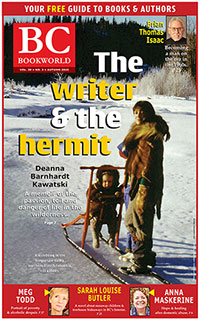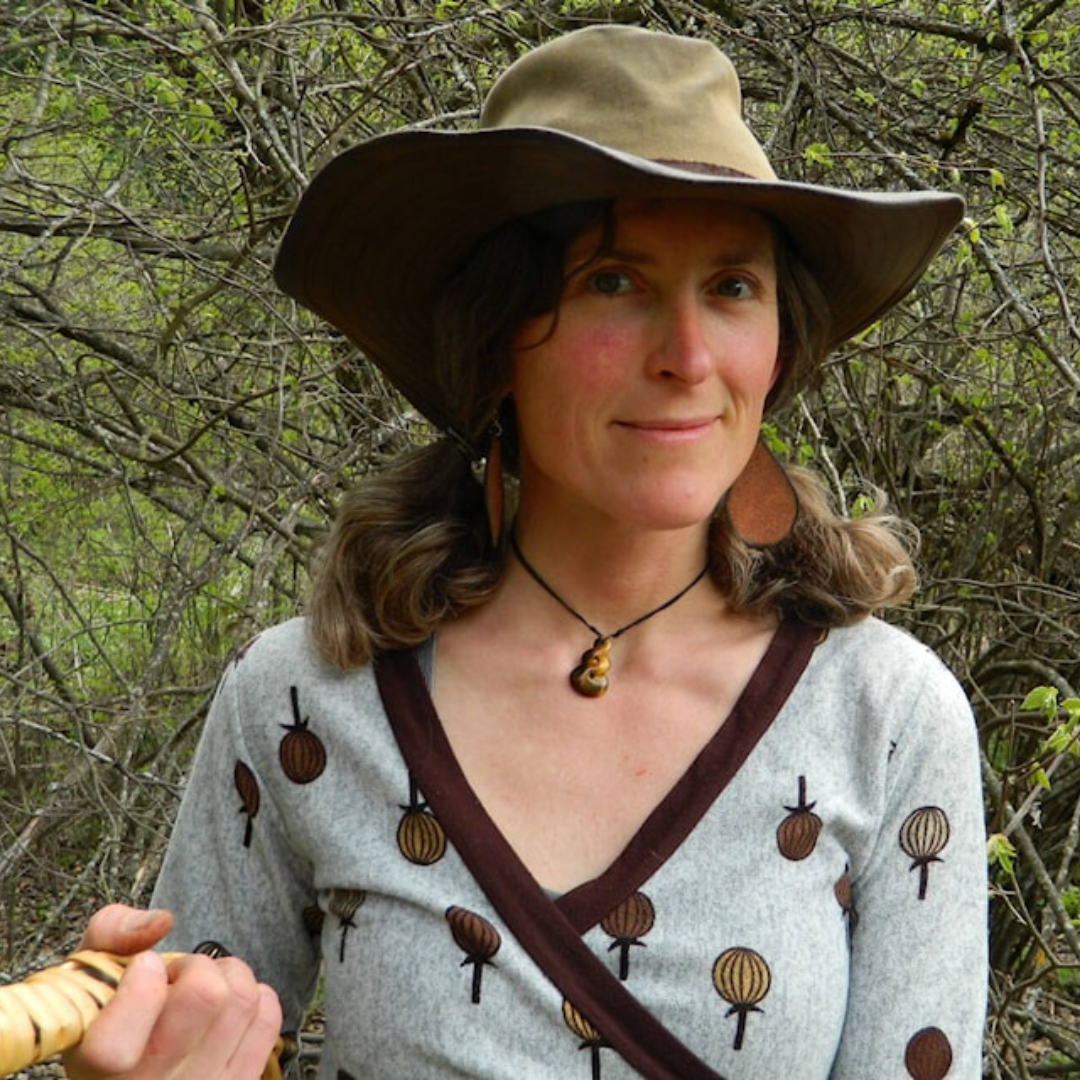Foraging as a Way of Life (New Society $35.99) by Mikaela Cannon offers a comprehensive guide to wildcrafting for a year of abundant, local, and seasonal eating. This full-color resource includes detailed plant descriptions, foraging recipes, and safety tips, inspiring readers to connect with nature while nourishing themselves sustainably. Drawing on the author's field experience and study of herbalism, the book encourages a deeper connection with the land, making it essential for anyone interested in self-sufficiency, food security, and creating healthy meals from foraged ingredients. Whether you're a gardener, hiker, or simply someone passionate about living lightly on the planet, this book provides valuable insights into the exuberance and joy of wild foods. She lives in the Okanagan, BC.
***
Foraging as a Way of Life: A Year-Round Field Guide to Wild Plants
by Mikaela Cannon (New Society $44.99)
Review by Alexander Varty (BCBW 2024)
Things are greening up on this April day on the northernmost of the Southern Gulf Islands, and so we’re hiking up to the local nettle patch, just to see how our favourite venomous plants are doing. They’re doing quite well, it seems, despite a scare a few days earlier when we found that these nutritious weeds had been decimated by a careless picker—someone not savvy enough to take only the top few leaves, and had instead snipped the plants off at ground level. Not coincidentally, that was around the same time that we saw an online ad offering fresh nettles for $25 a pound, at which price out-of-season supermarket spinach begins to seem like the bargain of all bargains.
We’re not harvesting today, but along the trail we pause to pluck a few leaves of Western bittercress, a beautiful spring bloomer and member of the mustard family that offers a mild isothiocyanate burn to the adventurous nibbler. Deer, for some reason, appear to shun it, preferring instead the reputedly ungulate-proof garlic and rhubarb in the garden. Oh, well. At least we know that our deer are not vampires. We stop at a patch of chickweed, savouring its slight vegetal sweetness, and a few feet farther along snap a sprig of broadleaf maple flowers from an overhanging bough. Some friends swear by maple blossoms as a spring tonic, but these are mealy and bland, clearly asking to be chopped, stirred into a pancake batter, and doused with maple syrup for proper Acer flavour.
Foraging as a way of life? I am, admittedly, a rank amateur. But in my British family, foraging goes far back, well beyond any written accounts. A maternal great-grandmother was the resident herbalist in her Scottish village while on the paternal side, my father taught his sons to pick fiddleheads from the New Brunswick mud, although we did not inherit his taste for dandelion wine.
So when it comes to foraging, amateur or otherwise, Mikaela Cannon and I are pretty much on the same page, and in her pages I’ve already learned some useful tips. Who knew, for instance, that nettle seeds are a powerful stimulant, although doses of more than 30 grams a day “can prevent you from sleeping”? The next time I need to pull an all-nighter, and that might come soon, I’ll head to the weed patch first. I was similarly unaware that catnip, should you be able to keep your furry friends from raiding the pantry, has an analgesic effect on humans. There are more than a few such snippets of knowledge to be gleaned here.
Where I have to differ with Foraging as a Way of Life, though, has to do with its stated intent—not so much the “find connection with the land” part, but the author’s contention that you can “feed your family locally, seasonally, and sustainably.” To do so in the modern world would require unbelievable luxuries of time. For instance, Cannon recommends harvesting, roasting and grinding cleaver seed to make a caffeine-free coffee substitute. The operation, she cautions, is “fiddly.” I’m going to stick with the nettle seeds, which at least promise a bit of a high.
There is something to be said, however, about any book that encourages people to put down their phones, head outdoors and pay close attention to what grows where and when. The real reward of foraging, I’d argue, lies not in being able to reduce your grocery bills but in establishing a stronger connection with the ground beneath your feet, honouring the Indigenous people who actually did live off the land in a sustainable fashion, and communing with the more-than-human world that sustains us in more-than-material ways.
Readers should note that Cannon lives in Armstrong and her book is geared towards the flora of the Okanagan and the Kootenays.
Residents of southwestern BC would be advised to investigate Luschiim’s Plants (Harbour, 2021) a collaboration between Coast Salish knowledge keeper Luschiim Arvid Charlie and ethnobotanist Nancy Turner [Turner wrote the forward to Cannon’s book]. Foraging as a Way of Life’s heft and seasonal organization diminish its usefulness as a field guide; for that it’s best to turn to Jim Pojar and Andy MacKinnon’s smaller but invaluable Plants of Coastal British Columbia (Lone Pine, 1997, 2004). And whether you come home with a bucket full of spruce tips or a basket full of pine mushrooms, the recipes in The Deerholme Foraging Book (TouchWood, 2014) penned by chef Bill Jones, will guarantee that your taste buds will be even more gratified than your wallet.
Happy foraging … but if you raid my nettle patch, please take only the tender leaves. 9780865719972
Senior West Coast arts journalist Alexander Varty lives and forages on unceded Snuneymuxw territory.
***
BOOKS:
Foraging as a Way of Life (New Society, 2024) $35.99 9780865719972
[BCBW 2024]
***
Foraging as a Way of Life: A Year-Round Field Guide to Wild Plants
by Mikaela Cannon (New Society $44.99)
Review by Alexander Varty (BCBW 2024)
Things are greening up on this April day on the northernmost of the Southern Gulf Islands, and so we’re hiking up to the local nettle patch, just to see how our favourite venomous plants are doing. They’re doing quite well, it seems, despite a scare a few days earlier when we found that these nutritious weeds had been decimated by a careless picker—someone not savvy enough to take only the top few leaves, and had instead snipped the plants off at ground level. Not coincidentally, that was around the same time that we saw an online ad offering fresh nettles for $25 a pound, at which price out-of-season supermarket spinach begins to seem like the bargain of all bargains.
We’re not harvesting today, but along the trail we pause to pluck a few leaves of Western bittercress, a beautiful spring bloomer and member of the mustard family that offers a mild isothiocyanate burn to the adventurous nibbler. Deer, for some reason, appear to shun it, preferring instead the reputedly ungulate-proof garlic and rhubarb in the garden. Oh, well. At least we know that our deer are not vampires. We stop at a patch of chickweed, savouring its slight vegetal sweetness, and a few feet farther along snap a sprig of broadleaf maple flowers from an overhanging bough. Some friends swear by maple blossoms as a spring tonic, but these are mealy and bland, clearly asking to be chopped, stirred into a pancake batter, and doused with maple syrup for proper Acer flavour.
Foraging as a way of life? I am, admittedly, a rank amateur. But in my British family, foraging goes far back, well beyond any written accounts. A maternal great-grandmother was the resident herbalist in her Scottish village while on the paternal side, my father taught his sons to pick fiddleheads from the New Brunswick mud, although we did not inherit his taste for dandelion wine.
So when it comes to foraging, amateur or otherwise, Mikaela Cannon and I are pretty much on the same page, and in her pages I’ve already learned some useful tips. Who knew, for instance, that nettle seeds are a powerful stimulant, although doses of more than 30 grams a day “can prevent you from sleeping”? The next time I need to pull an all-nighter, and that might come soon, I’ll head to the weed patch first. I was similarly unaware that catnip, should you be able to keep your furry friends from raiding the pantry, has an analgesic effect on humans. There are more than a few such snippets of knowledge to be gleaned here.
Where I have to differ with Foraging as a Way of Life, though, has to do with its stated intent—not so much the “find connection with the land” part, but the author’s contention that you can “feed your family locally, seasonally, and sustainably.” To do so in the modern world would require unbelievable luxuries of time. For instance, Cannon recommends harvesting, roasting and grinding cleaver seed to make a caffeine-free coffee substitute. The operation, she cautions, is “fiddly.” I’m going to stick with the nettle seeds, which at least promise a bit of a high.
There is something to be said, however, about any book that encourages people to put down their phones, head outdoors and pay close attention to what grows where and when. The real reward of foraging, I’d argue, lies not in being able to reduce your grocery bills but in establishing a stronger connection with the ground beneath your feet, honouring the Indigenous people who actually did live off the land in a sustainable fashion, and communing with the more-than-human world that sustains us in more-than-material ways.
Readers should note that Cannon lives in Armstrong and her book is geared towards the flora of the Okanagan and the Kootenays.
Residents of southwestern BC would be advised to investigate Luschiim’s Plants (Harbour, 2021) a collaboration between Coast Salish knowledge keeper Luschiim Arvid Charlie and ethnobotanist Nancy Turner [Turner wrote the forward to Cannon’s book]. Foraging as a Way of Life’s heft and seasonal organization diminish its usefulness as a field guide; for that it’s best to turn to Jim Pojar and Andy MacKinnon’s smaller but invaluable Plants of Coastal British Columbia (Lone Pine, 1997, 2004). And whether you come home with a bucket full of spruce tips or a basket full of pine mushrooms, the recipes in The Deerholme Foraging Book (TouchWood, 2014) penned by chef Bill Jones, will guarantee that your taste buds will be even more gratified than your wallet.
Happy foraging … but if you raid my nettle patch, please take only the tender leaves. 9780865719972
Senior West Coast arts journalist Alexander Varty lives and forages on unceded Snuneymuxw territory.
***
BOOKS:
Foraging as a Way of Life (New Society, 2024) $35.99 9780865719972
[BCBW 2024]
 Home
Home




